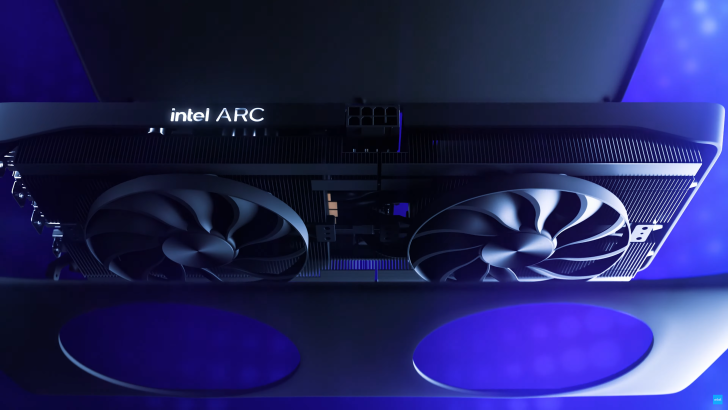Recent reports indicate that Intel has made the decision to cancel its high-performance Xe2-based Arc Battlemage “BMG-G31” GPUs, originally intended for gaming graphics cards. This move suggests a strategic withdrawal from the high-end gaming market for the company.
Intel’s Shift Away from High-End Gaming GPUs
Intel had initially aimed to penetrate the high-end GPU market with its Battlemage Xe2 series, which was expected to feature advanced models boasting up to 24 GB of VRAM. These GPUs were identified in shipping records, indicating that various configurations were in development. However, the company’s recent statements indicate a reevaluation of its focus within the discrete GPU segment.
According to insider reports and notable leaks, the development of the BMG-G31 GPU has been halted, marking the end of its prospects since Q3 2024. While some initial prototypes may have been created for testing purposes, the plans for a commercial rollout have been abandoned.
The BMG-G31 die was anticipated to exceed the specifications of the G21 found in the B580 and B570 models, with expectations of featuring between 24 and 32 Xe2 cores, a 256-bit memory bus, and 16 GB of GDDR6 memory.
Future Plans and Developments
No updates regarding the forthcoming Celestial “Xe3” discrete GPUs have surfaced, leaving uncertainty about their availability. The Xe3 architecture is planned for integration into next-generation Panther Lake CPUs, fabricated using Intel’s 18A process technology. There is currently no confirmation on whether a standalone Celestial “Xe3” GPU will be released.
Despite the cancellation of the BMG-G31, there remains a glimmer of hope that Intel might revisit this high-end segment in the future. Historical precedents suggest that projects initially deemed canceled can resurface, such as the recent revival of the Arrow Lake Refresh series.
Intel has also not revealed any new strategies concerning its Celestial GPUs, potentially indicating that these products are still in the preliminary phases of development. Past revelations from the same insider have indicated that the Xe3 “Celestial” and Xe4 “Druid” GPUs are indeed in the pipeline, further suggesting ongoing innovation within Intel’s graphics division.
For now, Intel’s Arc B580 and B570 have successfully positioned themselves as value-oriented solutions in a market dominated by Nvidia and AMD, despite the absence of new high-end contenders. The Battlemage series also holds its ground against AMD’s latest RDNA 3.5 offerings, with Intel continuing to cater to the budget-conscious gaming audience while shifting focus largely toward integrated graphics solutions.
Current Intel ARC Gaming GPU Lineup
| GPU Family | Intel Xe-HPG | Intel Xe-HPG | Intel Xe2-HPG | Intel Xe3-HPG | Intel Xe Next | Intel Xe Next Next |
|---|---|---|---|---|---|---|
| GPU Products | ARC Alchemist GPUs | ARC Alchemist+ GPUs | ARC Battlemage GPUs | ARC Celestial GPUs | ARC Druid GPUs | ARC E*** GPUs |
| GPU Segment | Mainstream Gaming (Discrete) | Mainstream Gaming (Discrete) | Mainstream / High-End Gaming (Discrete) | Mainstream / High-End Gaming (Discrete) | Mainstream / High-End Gaming (Discrete) | Mainstream / High-End Gaming (Discrete) |
| GPU Gen | Gen 12 | Gen 12 | Gen 13? | Gen 14? | Gen 15? | Gen 16? |
| CPU iGPU | Xe-LPG (Meteor Lake) | Xe-LPG+ (Arrow Lake) | Xe2-LPG (Lunar Lake) | Xe3-LPG (Panther Lake) | TBA | TBA |
| Process Node | TSMC 6nm | TSMC 6nm | TSMC 5nm (3nm Lunar Lake Tile) | TSMC 3nm? | TBA | TBA |
| Specs / Design | 512 EUs / 1 Tile / 1 GPU | 512 EUs / 1 Tile / 1 GPU | 1024 EUs / 1 Tile / 1 GPU | TBA | TBA | TBA |
| Memory Subsystem | GDDR6 | GDDR6 | GDDR6 | TBA | TBA | TBA |
| Launch | 2022 | 2024 | 2024 | 2025? | 2026? | 2026+ |

